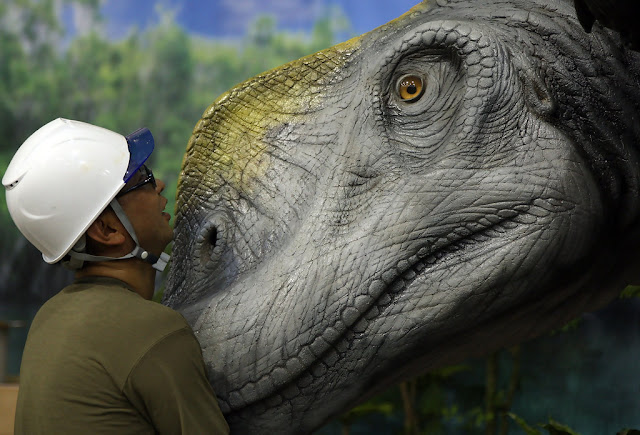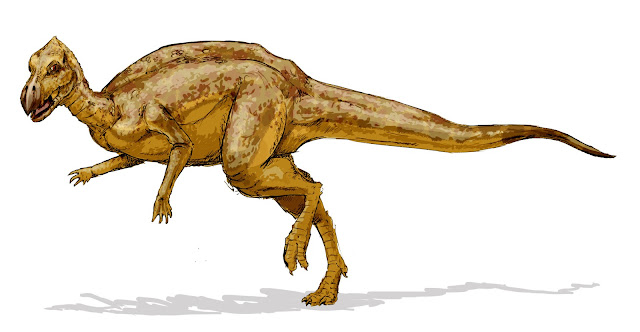Deltadromeus was a runner. How many videos show a running Deltadromeus? The answer is very few. Dinosaur King has a few battle scenes from the video games that people have recorded and posted online. The dinosaur that is given the name Deltadromeus is a rather nondescript theropod and has very exaggerated orbit ridges above its eyes. It is also portrayed as lightning fast, which is obviously an embellishment of the video game industry, but is also interesting. Deltadromeus also appears in two Dinosaur King episodes. The dinosaur in the cartoon is identical to the one in the video game series. Apparently Deltadromeus really enjoys swimming with princesses in the Ganges:
There are also a few tribute videos, but, as usual, these are still illustrations of a dinosaur set against music. There is one very short clip of an animatronic Deltadromeus, which is about as close as we have to a running dinosaur. The model is fairly good. The speculative orbit ridges are very subtle in this model but the hands remain rather large and the digits are lengthy compared to the palm of the hand. Tail and legs are not shown well in the clip well and are therefore it cannot be said whether or not they are accurately portrayed. They appear rather average, as in what we see in any theropod model available; in other words, fairly interchangeable between models.
There are also a few tribute videos, but, as usual, these are still illustrations of a dinosaur set against music. There is one very short clip of an animatronic Deltadromeus, which is about as close as we have to a running dinosaur. The model is fairly good. The speculative orbit ridges are very subtle in this model but the hands remain rather large and the digits are lengthy compared to the palm of the hand. Tail and legs are not shown well in the clip well and are therefore it cannot be said whether or not they are accurately portrayed. They appear rather average, as in what we see in any theropod model available; in other words, fairly interchangeable between models.















